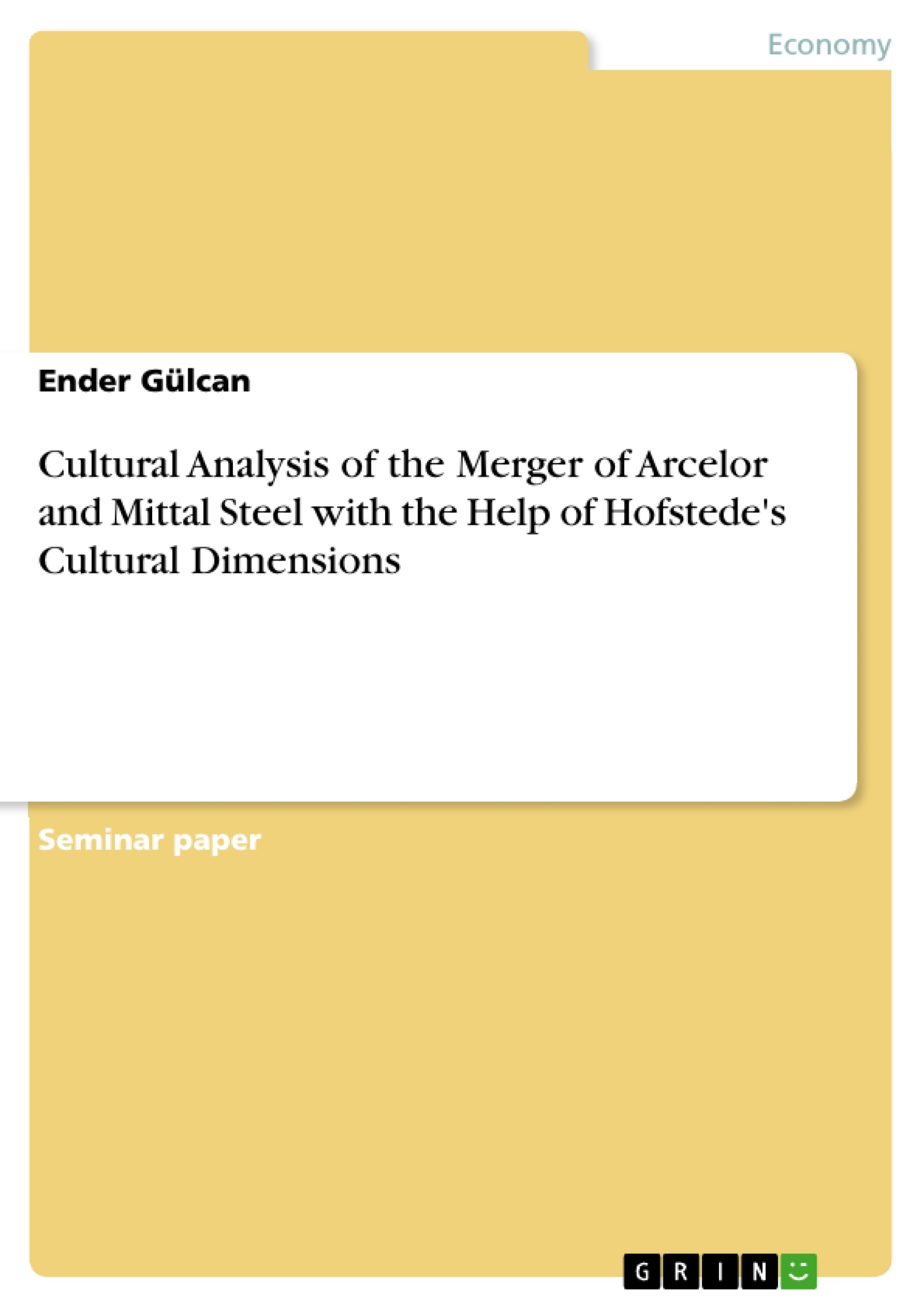This analysis focuses on the cultural aspects which could have influenced the merger and the post-merger-integration of Arcelor and Mittal Steel in either a positive or anegative way. Thus, the purpose of this work is to analyse the cultural factors which possibly played a role at forming the new corporate culture of ArcelorMittal.
In 2006, the world's two biggest steel companies Arcelor and Mittal Steel bundled their forces through a merger and ended in the creation of the world's leading steelmaking and mining company ArcelorMittal. The company truly is a global player, with steelmaking operations in 19 countries over 4 continents and a sales distribution to 160 countries, ArcelorMittal is represented all over the world.
The company attributes its success to its core values of sustainability, quality and leadership. ArcelorMittal supplies high-quality finished and semi-finished steel. The main industries which are supplied by ArcelorMittal are the automotive, appliance, engineering, construction, and machinery industries.
This thesis paper aims to answer the following questions: Considering the once-sharp increase of the company performance, how could the post-merger-integration be executed so smooth and quickly? How come that the two companies could communicate, and bundle their forces apparently trouble-free? Did the different national and corporate cultures complement or hinder the forming of a new organizational culture? With the assistance of the Hofstede cultural dimensions the ArcelorMittal's Merger will be analysed here.
TABLE OF CONTENT
1. Background Information - ArcelorMittal
2. The Focus of Analysis: The Merger of Arcelor and Mittal Steel
3. An Appropriate Framework for this Analysis?
4. A Brief Introduction into Hofstede’s Cultural Dimensions
4.1 What is Culture?
4.2 National culture
4.3 National culture Differences and the Hofstede’s Cultural Dimensions
4.4 Criticism to Hofstede’s Cultural Dimensions and Limitations of the Framework
5. The Cultural Analysis of ArcelorMittal’s Merger
5.1 Cultural Map “ Individualism vs. Collectivism ” and “ Power Distance ”
5.2 Cultural Map “ Uncertainty Avoidance ” and “ Masculinity vs. Femininity ”
5.3 Dimensions “ Long-Term vs. Short-Term Orientation ” and “ Indulgence vs. Restraint ”
5.4 Successful Merger & Post-Merger Integration
6. Conclusion
I. Appendices
A. Appendix A - Types of Metal Products
B. Appendix B - Levels of Mental Programming & the Onion Metaphor
I,. List of Tables ͘
III. List of Figures
IV. References
V. Bibliography
- Quote paper
- Ender Gülcan (Author), 2017, Cultural Analysis of the Merger of Arcelor and Mittal Steel with the Help of Hofstede's Cultural Dimensions, Munich, GRIN Verlag, https://www.grin.com/document/376521
-

-

-

-
Upload your own papers! Earn money and win an iPhone X. -

-
Upload your own papers! Earn money and win an iPhone X. -

-
Upload your own papers! Earn money and win an iPhone X. -

-
Upload your own papers! Earn money and win an iPhone X. -

-
Upload your own papers! Earn money and win an iPhone X. -

-
Upload your own papers! Earn money and win an iPhone X. -

-
Upload your own papers! Earn money and win an iPhone X. -

-
Upload your own papers! Earn money and win an iPhone X. -

-
Upload your own papers! Earn money and win an iPhone X.

